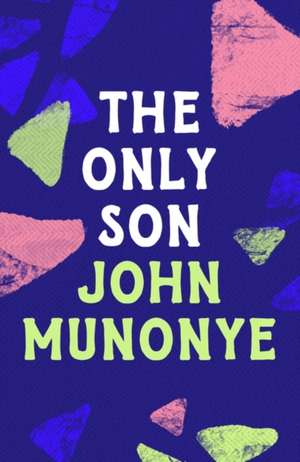The Only Son
Autor John Munonyeen Limba Engleză Paperback – 29 feb 2024
Preț: 80.05 lei
Preț vechi: 106.70 lei
-25% Nou
Puncte Express: 120
Preț estimativ în valută:
15.32€ • 15.90$ • 12.77£
15.32€ • 15.90$ • 12.77£
Carte tipărită la comandă
Livrare economică 22 martie-05 aprilie
Livrare express 15-21 februarie pentru 47.34 lei
Preluare comenzi: 021 569.72.76
Specificații
ISBN-13: 9781803289090
ISBN-10: 1803289090
Pagini: 352
Dimensiuni: 129 x 198 x 22 mm
Greutate: 0.26 kg
Editura: Bloomsbury Publishing
Colecția Apollo
Locul publicării:London, United Kingdom
ISBN-10: 1803289090
Pagini: 352
Dimensiuni: 129 x 198 x 22 mm
Greutate: 0.26 kg
Editura: Bloomsbury Publishing
Colecția Apollo
Locul publicării:London, United Kingdom
Caracteristici
The theme of Westernisation and the clash between African and European traditions is prevalent in Munonye's novels. Following the same family that appears in The Only Son, he went on to write two books called Obi (1969) and Bridge to a Wedding (1974) which explore similar topics.
Notă biografică
John Munonye was a prominent Igbo writer born in Akokwa, Nigeria in 1929.Raised a Roman Catholic, Munonye was educated at Christ the King College in Onitsha and graduated from the University of Ibadan in 1952 before continuing his education at the Institute of Education, London.His debut novel, The Only Son, was published in 1966 and was the twenty-first novel published in the Heinemann African Writers Series. Alongside releasing five more books for the series, he continued to work for the Nigerian Ministry of Education. He left in 1977, deciding to dedicate his time to writing. Munonye died in 1999.
Recenzii
Had there been no Chinua Achebe and no Things Fall Apart, John Munonye as a novelist would have occupied a different, more elevated niche in the annals of Nigerian literary history.
Not even Chinua Achebe, a contemporary with the same background and a similar folkloric imagination, paints rural characters with as much sympathy.'
Not even Chinua Achebe, a contemporary with the same background and a similar folkloric imagination, paints rural characters with as much sympathy.'
